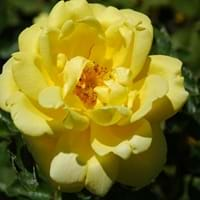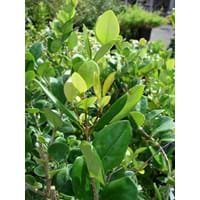Life Span
Perennial
Annual
Type
Perennial
Broadleaf Evergreen
Origin
Hybrid origin
Eastern Asia
Types
Not Available
Not Available
Habitat
gardens, Pastures, Prairies, Terrestrial, Tropical regions
foothill woods, Hills, Lowland
USDA Hardiness Zone
3-8
7-10
AHS Heat Zone
10-1
Not Available
Sunset Zone
1a, 1b, 2a, 2b, 3a, 3b, 4, 5, 6, 7, 8, 9, 10, 11, 12, 13, 14, 15, 16, 17, 18, 19, 20, 21, 22, 23, 24
21,22
Habit
Oval or Rounded
Upright/Erect
Flower Color
Not Available
White
Flower Color Modifier
Not Available
Bicolor
Fruit Color
Non Fruiting Plant
Green, Black
Leaf Color in Spring
Not Available
Dark Green
Leaf Color in Summer
Not Available
Dark Green
Leaf Color in Fall
Not Available
Dark Green
Leaf Color in Winter
Light Green
Dark Green
Leaf Shape
Pinnate
Acicular
Plant Season
Summer, Fall
Spring, Summer, Fall, Winter
Sunlight
Full Sun, Partial Sun
Full Sun, Partial Sun, Partial shade
Type of Soil
Loam, Sand
Loam, Sand
The pH of Soil
Acidic, Neutral
Acidic, Neutral, Alkaline
Soil Drainage
Well drained
Average
Bloom Time
Early Summer, Summer, Late Summer, Early Fall
Late Spring, Early Summer, Summer
Tolerances
Drought
Drought, Salt
Where to Plant?
Ground, Pot
Ground
How to Plant?
Grafting, Stem Planting, Transplanting
Rooted stem cutting, Stem Cutting, stem tip cuttings
Plant Maintenance
Medium
Medium
Watering Requirements
Form a Soil ring to water efficiently, Requires regular watering, Water twice a day in the initial period, Water when soil is dry
Average Water Needs, Do not water frequently
In Summer
Lots of watering
Lots of watering
In Spring
Moderate
Moderate
In Winter
Average Water
Average Water
Soil pH
Acidic, Neutral
Acidic, Neutral, Alkaline
Soil Type
Loam, Sand
Loam, Sand
Soil Drainage Capacity
Well drained
Average
Sun Exposure
Full Sun, Partial Sun
Full Sun, Partial Sun, Partial shade
Pruning
Prune if you want to improve plant shape, Remove damaged leaves, Remove dead leaves, Remove deadheads, Shape and thin as needed
Remove damaged leaves, Remove dead branches, Remove dead leaves
Fertilizers
All-Purpose Liquid Fertilizer, organic fertlizers
All-Purpose Liquid Fertilizer, Apply N-P-K, fertilize in growing season
Pests and Diseases
Aphids, Bacterial Diseases, Mites, Slugs
Aphids, Bacterial leaf spot, Galls, Honey fungus, Red blotch, Wasps
Plant Tolerance
Drought
Drought, Full Sun, Shade areas, Variety of soil types
Flower Petal Number
Not Available
Single
Edible Fruit
Not Available
No
Foliage Texture
Not Available
Medium
Foliage Sheen
Not Available
Glossy
Attracts
Not Available
Aphids
Allergy
no allergic reactions
Not Available
Aesthetic Uses
Beautification, Bouquets
Borders, Not Used For Aesthetic Purpose
Beauty Benefits
Not Available
Not Available
Environmental Uses
Air purification
Air purification
Medicinal Uses
No Medicinal Use
Antibacterial, Hypotensive, Tonic
Part of Plant Used
Flowers
Leaves
Other Uses
Showy Purposes, Used as Ornamental plant
Used as an ingredient in coffee
Used As Indoor Plant
No
No
Used As Outdoor Plant
Yes
Yes
Garden Design
Container, Cutflower, Feature Plant, Foundation, Mixed Border
Container, Foundation, Hedges, Mixed Border, Screening, Wind Break, Topiary, Bonsai, Espalier
Botanical Name
ROSA 'Allgold'
LIGUSTRUM japonicum
Common Name
Floribunda Rose
Japanese Ligustrum
Waxleaf Ligustrum
Texas Privet
Waxleaf Privet
In Hindi
रोजा allgold
Japanese Privet
In German
rosa Allgold
japanische Privet
In French
rosa TousPlaqué
Privet japonaise
In Spanish
rosa allgold
Privet japonesa
In Greek
rosa allgold
Ιαπωνικά Privet
In Portuguese
rosa allgold
Privet Xapanese
In Polish
rosa allgold
Xapanese Privet
In Latin
Rosa allgold
Japanese Privet
Phylum
Not Available
Tracheophyta
Class
Not Available
Magnoliopsida
Clade
Angiosperms, Eudicots, Rosids
Angiosperms, Asterids, Eudicots
Tribe
Not Available
Not Available
Subfamily
Rosoideae
Not Available
Season and Care of Floribunda Rose and Japanese Privet
Season and care of Floribunda Rose and Japanese Privet is important to know. While considering everything about Floribunda Rose and Japanese Privet Care, growing season is an essential factor. Floribunda Rose season is Summer and Fall and Japanese Privet season is Summer and Fall. The type of soil for Floribunda Rose is Loam, Sand and for Japanese Privet is Loam, Sand while the PH of soil for Floribunda Rose is Acidic, Neutral and for Japanese Privet is Acidic, Neutral, Alkaline.
Floribunda Rose and Japanese Privet Physical Information
Floribunda Rose and Japanese Privet physical information is very important for comparison. Floribunda Rose height is 60.00 cm and width 90.00 cm whereas Japanese Privet height is 150.00 cm and width 120.00 cm. The color specification of Floribunda Rose and Japanese Privet are as follows:
Floribunda Rose flower color: Not Available
Floribunda Rose leaf color: Not Available
Japanese Privet flower color: White
- Japanese Privet leaf color: Dark Green
Care of Floribunda Rose and Japanese Privet
Care of Floribunda Rose and Japanese Privet include pruning, fertilizers, watering etc. Floribunda Rose pruning is done Prune if you want to improve plant shape, Remove damaged leaves, Remove dead leaves, Remove deadheads and Shape and thin as needed and Japanese Privet pruning is done Remove damaged leaves, Remove dead branches and Remove dead leaves. In summer Floribunda Rose needs Lots of watering and in winter, it needs Average Water. Whereas, in summer Japanese Privet needs Lots of watering and in winter, it needs Average Water.





